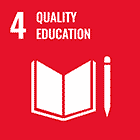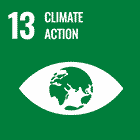Let’s keep in touch!
The latest news of the Metis Fund, delivered straight to your inbox!
Biologist Wendy Foden, artist Hannelie Coetzee, and twelve eco-rangers from Agulhas National Park collaboratively designed a sculpture that reflects species extinction and the urgent need to preserve biodiversity.


Located at the southernmost tip of the African continent, Agulhas National Park is an exceptional sanctuary for wildlife and flora. It also plays a critical economic role by boosting tourism. As climate change intensifies, humans, plants, and animals are forced to move to more welcoming environments. Many species end their migratory journeys at Cape Agulhas, a symbolic and powerful place known as a land’s end.
biologist
artist
eco-rangers
Wendy Foden is a South African biologist and conservation expert known for her work on the impacts of climate change on biodiversity. Since 2016, she has led the Climate Change Specialist Group at the International Union for Conservation of Nature (IUCN). Hannelie Coetzee is a visual artist and honorary researcher at the Global Change Institute (University of Witwatersrand). Industrial waste serves as the primary material for her works, which are placed in natural environments as immersive interventions aimed at enhancing public engagement with nature.
Together, they accompanied twelve young eco-rangers on a three-day immersion in Agulhas National Park. They shared their environmental concerns and discussed possible modes of action and resistance. Their initial ideas were expressed through drawings, sculptures, and poems. From these early sketches emerged a monumental artwork titled “The Least Identifiable Creature of the Cape,” alluding to the idea of extinction. Made up of sculpted and painted rocks, it is placed at the southernmost end of the park.
“The work is very subtle because we did it for ourselves and for the landscape. I wanted it to be open enough for viewers to decide for themselves what kind of creature it is. (…) You don’t know if it’s entering or leaving the ocean. It doesn’t matter whether it’s an amphibian or a terrestrial creature. Above all, it’s an imaginary creature,” explains Hannelie Coetzee.
Afterwards, the eco-rangers visited three local schools to discuss environmental issues and climate change with students.
The sculpture was unveiled to the public during a festive event attended by around one hundred people, where a documentary retracing the creative process, produced by the eco-rangers themselves, was also shown.
This initiative created sustainable income opportunities: guided tours of the park focusing on climate issues are now organized, ending at the sculpture, which has also become a tourist attraction in its own right.